
Roots
Consider, if you will, the very strands that spring from our scalps—a living record, a testament to journeys both individual and collective. For those with textured hair, this living record holds more than mere biological code; it carries the echoes of ancient suns, the wisdom of ancestral hands, and the enduring spirit of resilience passed down through generations. How, then, does the very structure of this magnificent hair find an ally, a guardian, in the simple, yet profound, act of oil sun defense? The answer, like the hair itself, is coiled within a rich heritage, a story whispered through time, from the elemental biology of the strand to the sacred rituals of care.
The story begins at the source, deep within the follicle , where the helix of textured hair takes its unique, often elliptical, form. This shape means that unlike straighter hair, our coils and kinks possess natural points of vulnerability along their curves. The cuticle, that protective outer layer of overlapping scales, tends to lift more readily at these bends, creating microscopic openings.
These tiny gateways, while essential for moisture absorption, also lay bare the delicate inner cortex to environmental aggressors, chief among them the relentless rays of the sun. Ultraviolet radiation, particularly UVA and UVB, acts as an unseen sculptor, eroding the protein bonds that lend strength and elasticity, and fading the precious melanin that lends hue.
Textured hair’s unique structural geometry, a gift from our ancestors, also presents distinct vulnerabilities to the sun’s silent, potent touch.
For generations, long before the advent of modern photoprotectants, our forebears understood this vulnerability with an innate wisdom. Their understanding was not framed in scientific terminology, of course, but observed in the living laboratory of daily existence under diverse suns, from the arid savannas to humid coastlines. The application of natural oils, harvested from the earth’s bounty, became a fundamental ritual. These oils—be they shea butter , palm oil , coconut oil , or others endemic to specific regions—were not simply for sheen.
They served as a tangible shield, a physical barrier against the drying, damaging influence of the sun. This ancestral practice was not a mere beauty trend; it was a deeply ingrained strategy for survival, preserving the health of hair that often signified status, identity, and tribal affiliation.

What Did Ancient Hair Science Say About Textured Hair’s Sun Exposure?
Our understanding of textured hair’s anatomy, though now aided by electron microscopes and molecular biology, finds its roots in observations made over millennia. The helical nature of hair, varying from broad waves to tightly packed Z-patterns, dictates how light interacts with it. Light, including ultraviolet light, scatters differently off these varied textures.
The bends in coiled hair create a larger surface area exposed to direct sunlight when the hair is unmanipulated, a phenomenon less pronounced in straighter strands. This increased exposure, coupled with the lifted cuticle at the curve points, means that UV radiation can penetrate more readily into the cortex , initiating a cascade of destructive processes.
Historically, this subtle but persistent damage manifested as dryness, brittleness, and a dulling of natural vibrancy. Ancestral communities, through trial and observation, discovered that certain lipid-rich plant extracts could mitigate these effects. The oils, by their very nature, possess an occlusive quality. They coat the hair shaft, effectively laying down a protective film that smooths the raised cuticle scales and forms a physical screen.
This screen intercepts a portion of the incoming UV rays, diminishing their ability to break down keratin proteins and deplete the hair’s natural moisture content. The wisdom of these practices, passed down orally and through lived example, speaks to a sophisticated, albeit empirical, understanding of hair’s needs in challenging environments.

How Does Melanin’s Role in Textured Hair’s Heritage Influence Sun Protection Needs?
Melanin, the pigment responsible for hair color, also plays a role in natural sun protection. Eumelanin , the dominant melanin type in darker textured hair, is a powerful absorber of UV radiation. This inherent protection is a biological gift, a legacy of our ancestors who thrived under intense sun.
However, even with this natural shield, prolonged or intense sun exposure still exacts a toll. The UV light that is absorbed by melanin can still generate free radicals, oxidative stressors that degrade the hair’s protein structure over time.
This is where the oil sun defense steps in, complementing melanin’s role. Oils do not necessarily enhance melanin’s UV absorption, but they provide an external defense mechanism. They reflect and scatter some of the UV radiation before it even reaches the hair shaft, reducing the overall load on the melanin and the hair’s internal defenses.
Furthermore, many traditional oils contain naturally occurring antioxidants, which can help neutralize the free radicals that do manage to form, offering a secondary layer of protection at a molecular level. This symbiotic relationship between inherent biological defense and external ancestral practice highlights a deep, historical synergy in textured hair care.

Ritual
The careful application of oils to textured hair is far more than a simple step in a beauty routine; it is a ritual steeped in the traditions of our forebears, a practice that has flowed through generations, adapting yet holding steadfast to its core purpose. The act itself, a tender smoothing of oil onto each curl, each coil, becomes a mindful connection to a past where such practices were essential for hair preservation and, by extension, cultural expression. This deeply ingrained heritage informs how we understand oil sun defense today, illuminating its efficacy not just as a scientific mechanism, but as a living testament to ancestral wisdom.
Think of the women of West Africa, for instance, preparing their children for the day. Their hands, nimble and practiced, would work shea butter , rendered from the nuts of the Vitellaria paradoxa tree, through strands before intricate braiding or styling. This was not a casual act. It was a deliberate coating, ensuring that the hair, exposed to the elements, remained pliable and protected from the sun’s unyielding heat.
This daily ritual, repeated over countless lifetimes, established the foundation for sun defense that transcended mere aesthetics. The oils created a physical barrier, yes, but also nourished the hair, helping it retain moisture, which is often severely depleted by sun exposure, particularly for hair with its inherent need for hydration due to its structural characteristics.
The unique coiled structure of textured hair means that natural sebum, produced by the scalp’s sebaceous glands, struggles to travel down the hair shaft as effectively as it does on straighter hair. This natural oil, which offers a degree of protection and lubrication, often remains concentrated near the scalp. This anatomical reality makes the external application of oils even more critical for textured hair. When applied, oils like jojoba , which closely mimics the scalp’s natural sebum, or richer options like castor oil , fill this natural deficit.
They create a continuous, hydrophobic layer along the length of the strand. This layer is fundamental to sun defense. It reduces the direct impact of UV radiation by either reflecting some rays away or forming a buffer that dissipates a portion of the energy before it reaches the hair’s inner structures.
The intentional oiling of textured hair, a practice echoing ancestral wisdom, builds a protective layer that augments natural defenses against environmental stressors.

How Did Ancestral Styling Traditions Prioritize Hair Health Under The Sun?
Many traditional styling practices for textured hair inherently incorporated protective elements, often enhanced by oils. Braiding , twisting , and locing styles, common across various diasporic communities, enclose sections of hair, reducing its direct surface area exposure to the sun. When these styles were prepared with a generous application of oils, the defense was amplified. The oil not only sealed the cuticles of the individual strands but also formed a coherent layer around the grouped sections of hair, acting as a collective shield.
Consider the ancient Egyptian use of castor oil and almond oil in their elaborate hair preparations. Beyond their cosmetic appeal, these balms likely offered protection from the harsh desert sun, preventing the hair from becoming overly dry and brittle. Their meticulous application to wigs and natural hair points to a sophisticated understanding of preservation.
The physical density of these styles, combined with the occlusive properties of the oils, created a formidable defense. This practical wisdom, born from necessity, showcases an intuitive understanding of how structure and substance could work in concert against the elements.

Does Heat Styling’s History Inform Oil Sun Defense?
While contemporary heat styling methods might seem a departure from traditional care, their historical precursors often involved natural oils as a buffer. For instance, the use of hot combs in the early 20th century, though damaging if misused, often involved the application of a pomade or oil to help the comb glide and to provide a temporary sheen. This application, while primarily for styling, inadvertently offered a thin layer of protection against the direct heat.
The sun’s heat, while less intense than a styling tool, still contributes to moisture loss and structural degradation. Oils, with their insulating properties, can help mitigate this. They slow down the rate of water evaporation from the hair shaft, helping to maintain hydration levels even under direct sunlight. This passive thermal defense, a subtle benefit often overlooked, contributes significantly to the overall preservation of the hair’s structural integrity, reducing the likelihood of protein degradation and cuticle damage that can leave hair porous and vulnerable.
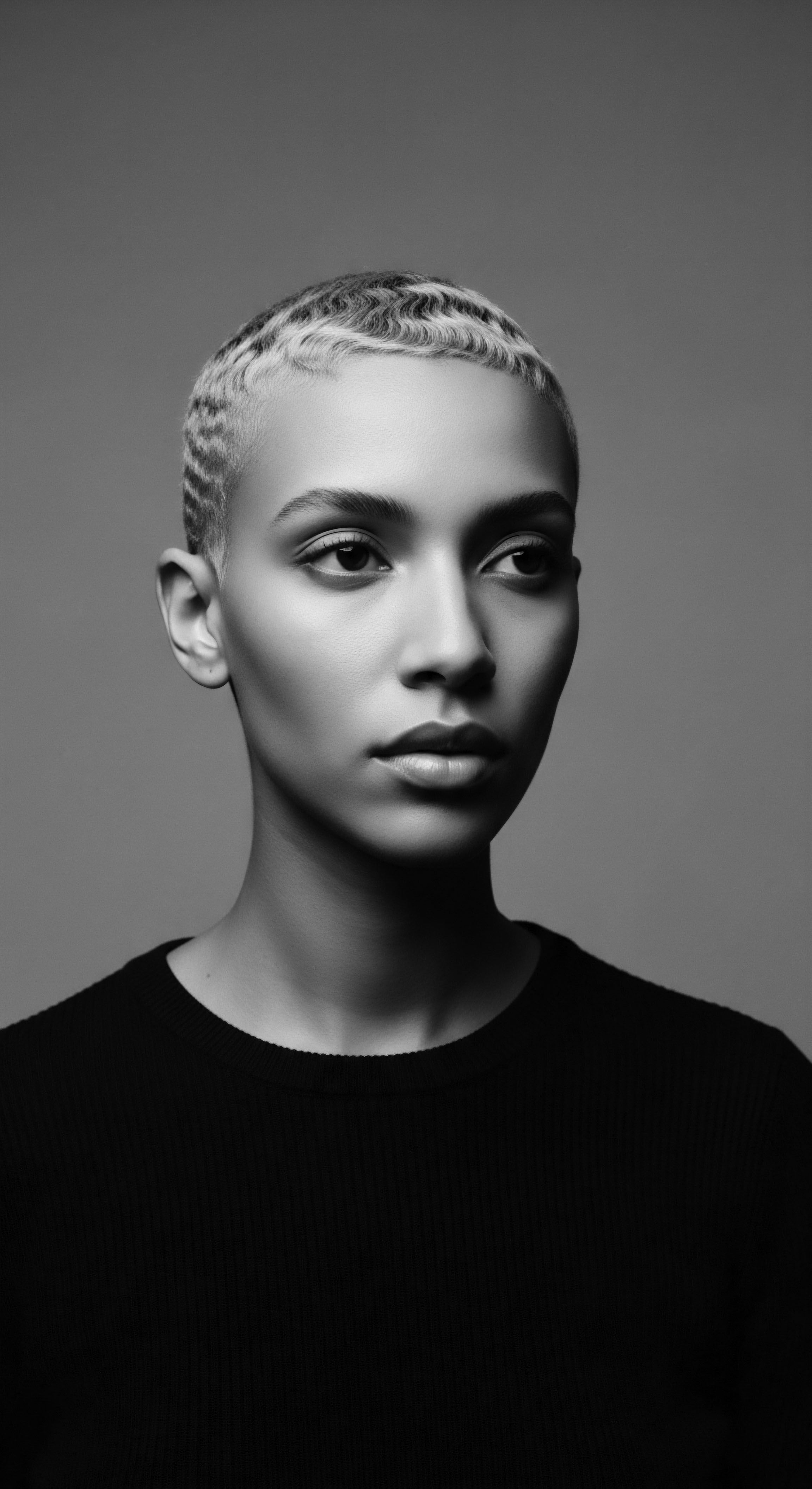
Relay
The dialogue between ancestral wisdom and contemporary scientific understanding illuminates the profound ways textured hair’s structure gains from oil sun defense. It is a relay race across time, where the baton of knowledge, once held by those who knew only observation and tradition, is now grasped by minds capable of peering into the molecular architecture of a strand. This continuity reveals that the benefits are not merely superficial; they are deeply ingrained in the very biology and chemistry of textured hair. The story of oil sun defense for textured hair is a testament to adaptive knowledge, a rich tapestry where heritage informs and enhances modern care.
From a biophysical standpoint, the unique helical structure of textured hair means that the hair shaft presents a more irregular surface area than straight hair. This irregularity results in what scientists call a “light pipe effect” being less efficient. In simpler terms, light doesn’t travel as smoothly along a coiled strand, meaning more of it scatters outwards and penetrates the outer layers. This scattered light includes harmful UV radiation.
When oils are applied, they act as a refractive layer, changing how light interacts with the hair. Some studies, such as those by Al-Ghassani et al. (2018), suggest that certain oils, like coconut oil , possess inherent UV absorption capabilities, though their SPF values are generally low compared to synthetic sunscreens. However, their primary benefit lies in their ability to form a hydrophobic film.
This film physically obstructs a portion of the UV light from reaching the hair shaft, and crucially, it reduces the rate of water loss, which is exacerbated by UV exposure. The presence of this oil barrier helps maintain the hair’s hydro-lipid balance , preventing the dryness and brittleness that are hallmarks of sun-damaged textured hair.
Furthermore, UV radiation directly affects the amino acids that form the hair’s keratin structure . Specifically, tryptophan , tyrosine , and cystine are highly susceptible to photodegradation. The breakage of cystine bonds, for instance, leads to a reduction in hair strength and elasticity. Oils, by acting as a physical shield, reduce the direct assault on these amino acids.
Beyond this physical barrier, many traditional oils contain naturally occurring antioxidants, such as tocopherols (Vitamin E) in argan oil or polyphenols in olive oil. These compounds are adept at scavenging free radicals, the highly reactive molecules generated by UV exposure that instigate oxidative damage to hair proteins and lipids. This dual action—physical obstruction and antioxidant support—provides a comprehensive defense that directly benefits the structural integrity of textured hair under the sun.
The relay of ancestral knowledge, augmented by scientific insight, reveals how oils create a multi-layered shield for textured hair, preserving its intrinsic strength and vitality.
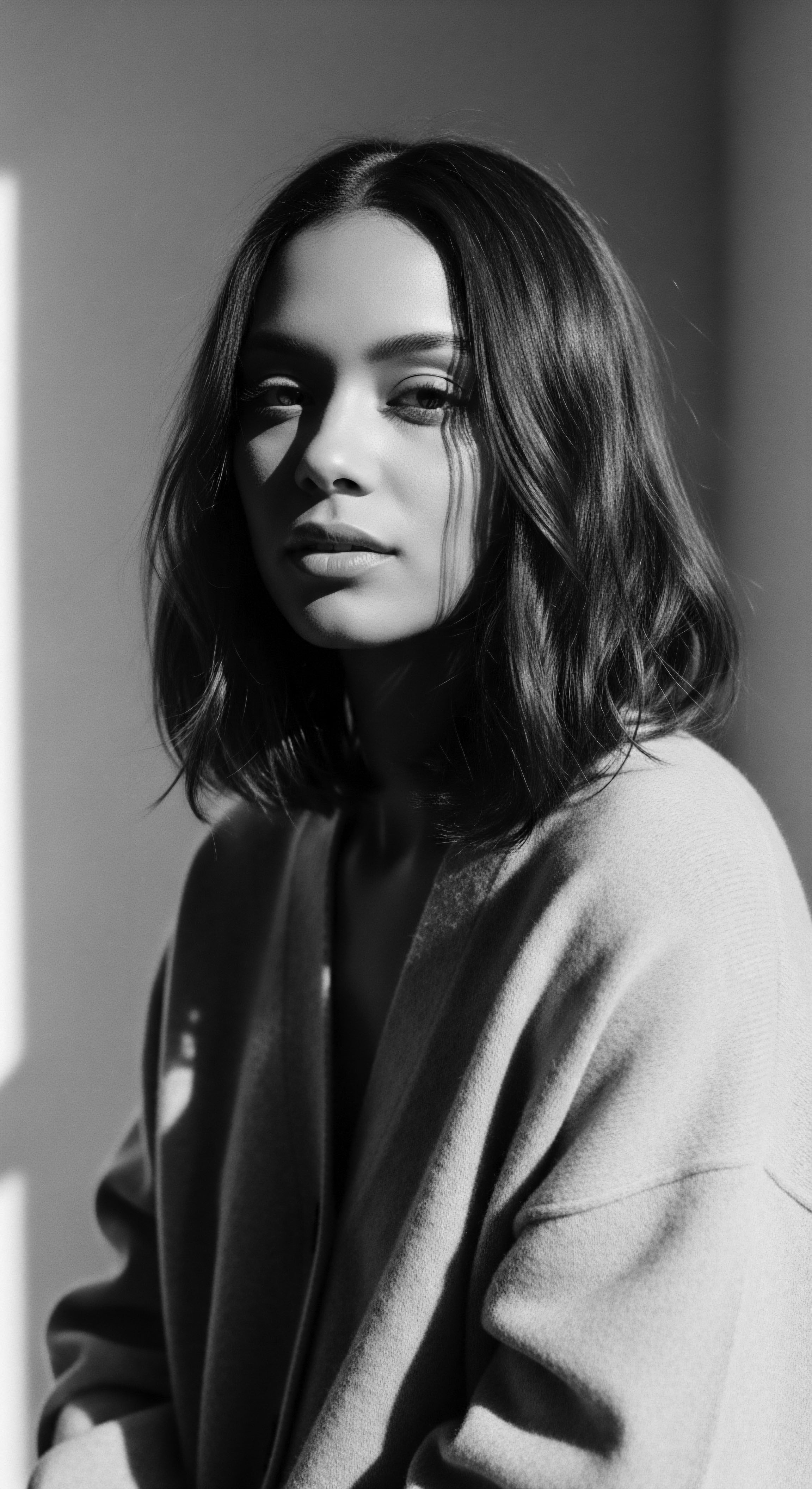
Can Traditional Oil Application Validate Modern UV Filters in Textured Hair Care?
The enduring efficacy of traditional oiling practices offers a powerful validation for the inclusion of modern UV filters in hair care formulations designed for textured hair. While ancestral oils provided a foundational, broad-spectrum defense, contemporary science allows for targeted protection. Modern sunscreens for hair, containing ingredients like benzophenones or cinnamates , are specifically engineered to absorb or reflect a wider range of UV wavelengths with greater efficiency.
However, the ancestral insight remains paramount ❉ the delivery system matters. Oils, whether traditional or part of a modern formulation, provide an exceptional vehicle for these protective agents. They ensure even distribution along the often tortuous path of a coiled strand, adhering well to the hair shaft and resisting wash-off due to their hydrophobic nature. This synergy, where the ancient practice of oiling serves as a conduit for advanced protective chemistry, highlights a continuous evolution of care, always rooted in the needs of textured hair.
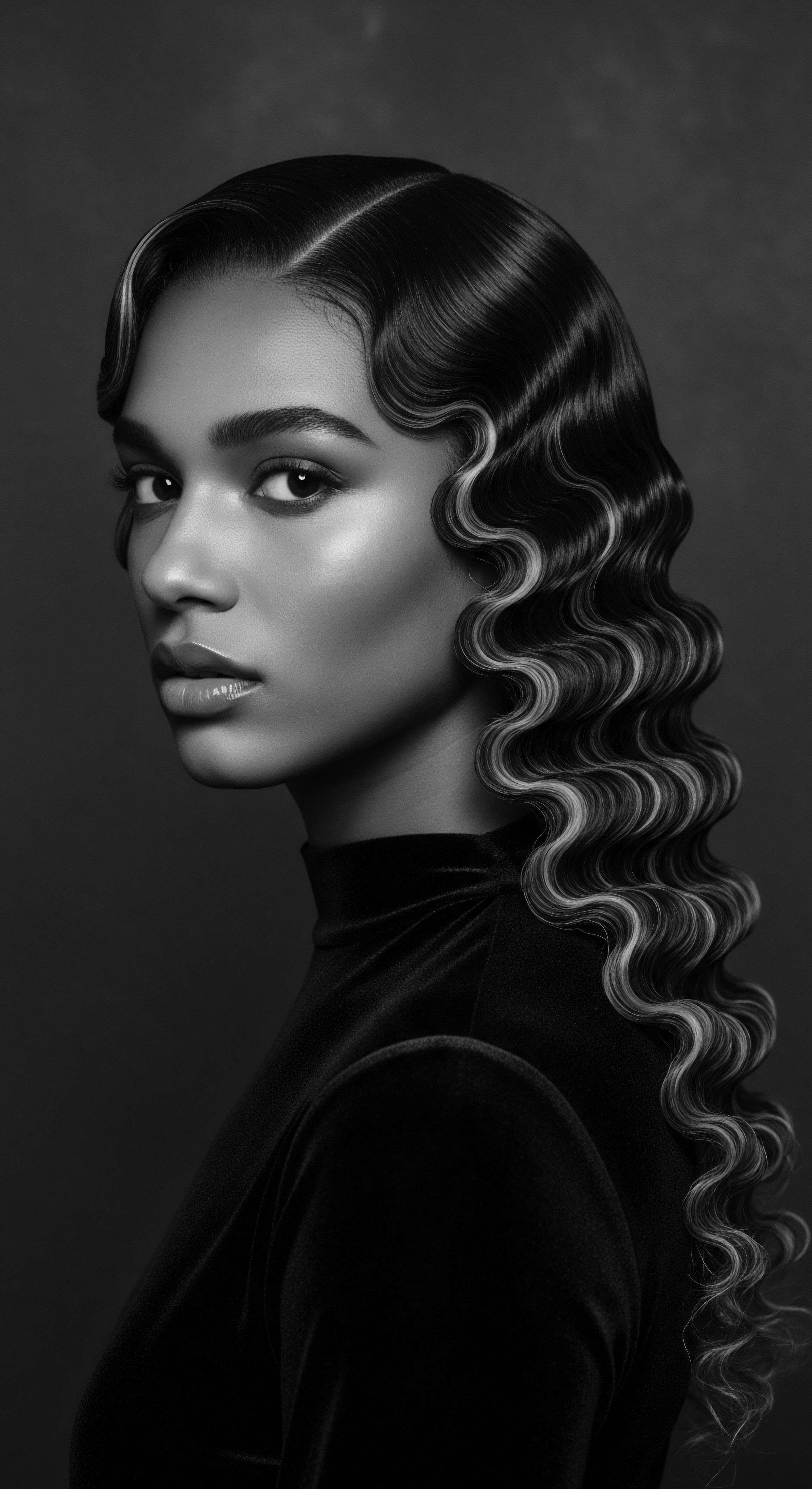
How Do Oils Prevent Protein Loss and Fading in Textured Hair?
The sun’s impact on hair color and protein loss is a significant concern for textured hair. UV radiation degrades melanin, leading to noticeable color changes and fading, particularly in chemically treated or naturally lighter strands. Simultaneously, the oxidative stress from UV light breaks down the disulfide bonds within the hair’s keratin structure, making the hair weaker, more prone to breakage, and increasing its porosity.
Oils play a crucial role in mitigating both these issues. By forming a protective layer, they reduce the direct exposure of melanin to UV light, thereby preserving color vibrancy. Think of it as drawing a gentle, translucent curtain against the bleaching effect of the sun. The reduction in direct UV impact also translates to less free radical formation, which in turn means less damage to the hair’s protein matrix .
Less protein degradation means stronger hair, less breakage, and a more resilient structure overall. This is not just theoretical; studies have shown that hair treated with oils before sun exposure exhibits less protein loss and retains more of its mechanical strength compared to untreated hair (e.g. Keis et al. 2011). This scientific validation simply echoes what our ancestors understood intuitively ❉ oils keep hair strong, vibrant, and resilient under the sun’s gaze.
| Aspect of Defense Physical Barrier |
| Ancestral Practice (Heritage) Regular application of plant-based oils like shea butter, palm oil, or coconut oil; use of headwraps and intricate protective styles. |
| Modern Scientific Insight Oils create a hydrophobic film that reflects and scatters UV radiation; materials like silk/satin provide a physical block. |
| Aspect of Defense Moisture Retention |
| Ancestral Practice (Heritage) Oils traditionally used to seal moisture, preventing dryness in harsh climates; observed pliancy and reduced brittleness. |
| Modern Scientific Insight Oils reduce transepidermal water loss from hair shaft; maintain hydro-lipid balance critical for hair elasticity. |
| Aspect of Defense Antioxidant Support |
| Ancestral Practice (Heritage) Empirical understanding that certain oils kept hair healthy and vibrant, resisting damage from prolonged exposure. |
| Modern Scientific Insight Many natural oils contain tocopherols and polyphenols that neutralize free radicals generated by UV exposure. |
| Aspect of Defense Protein Preservation |
| Ancestral Practice (Heritage) Hair seen as a symbol of strength and vitality; practices aimed at preventing breakage and maintaining length. |
| Modern Scientific Insight Reduced UV penetration prevents degradation of keratin proteins (e.g. cystine bonds) and amino acids . |
| Aspect of Defense This comparative lens demonstrates the profound continuity between ancient hair care traditions and our current scientific understanding of textured hair's needs. |
Consider the findings documented by researchers like Ruetsch et al. (2012) on the impact of UV radiation on hair. Their work, though broad, underscores how the unique helical twists of textured hair, with their inherent points of structural stress, render the cuticle more susceptible to disruption from external forces like UV light.
This susceptibility means that the lipid layer, the natural moisture barrier of the hair, is more easily compromised. When this natural barrier is weakened, the hair becomes more porous, allowing moisture to escape and environmental aggressors to penetrate more deeply.
The traditional application of oils acts as an immediate countermeasure to this vulnerability. By providing an exogenous lipid layer, these oils reinforce the hair’s natural defenses, effectively filling in the gaps where the cuticle might be lifted or damaged. This not only directly helps in sun defense by blocking UV, but also indirectly by maintaining hair’s overall health, ensuring it remains hydrated and robust enough to resist other forms of environmental stress. The wisdom of oiling, then, is a holistic approach, a comprehensive strategy for the care of hair that is intrinsically linked to its architectural distinctions and ancestral legacy.
- Shea Butter ❉ A rich emollient traditionally sourced from the shea tree in West Africa, known for its deep moisturizing and protective qualities, often used as a direct sun shield.
- Coconut Oil ❉ A ubiquitous staple in many tropical cultures, particularly in the Caribbean and South Asia, its unique molecular structure allows it to penetrate the hair shaft, offering internal and external defense.
- Castor Oil ❉ A dense, viscous oil with a long history of use across Africa and the Caribbean, valued not only for its perceived growth-promoting properties but also for its ability to create a thick, protective coating on hair.
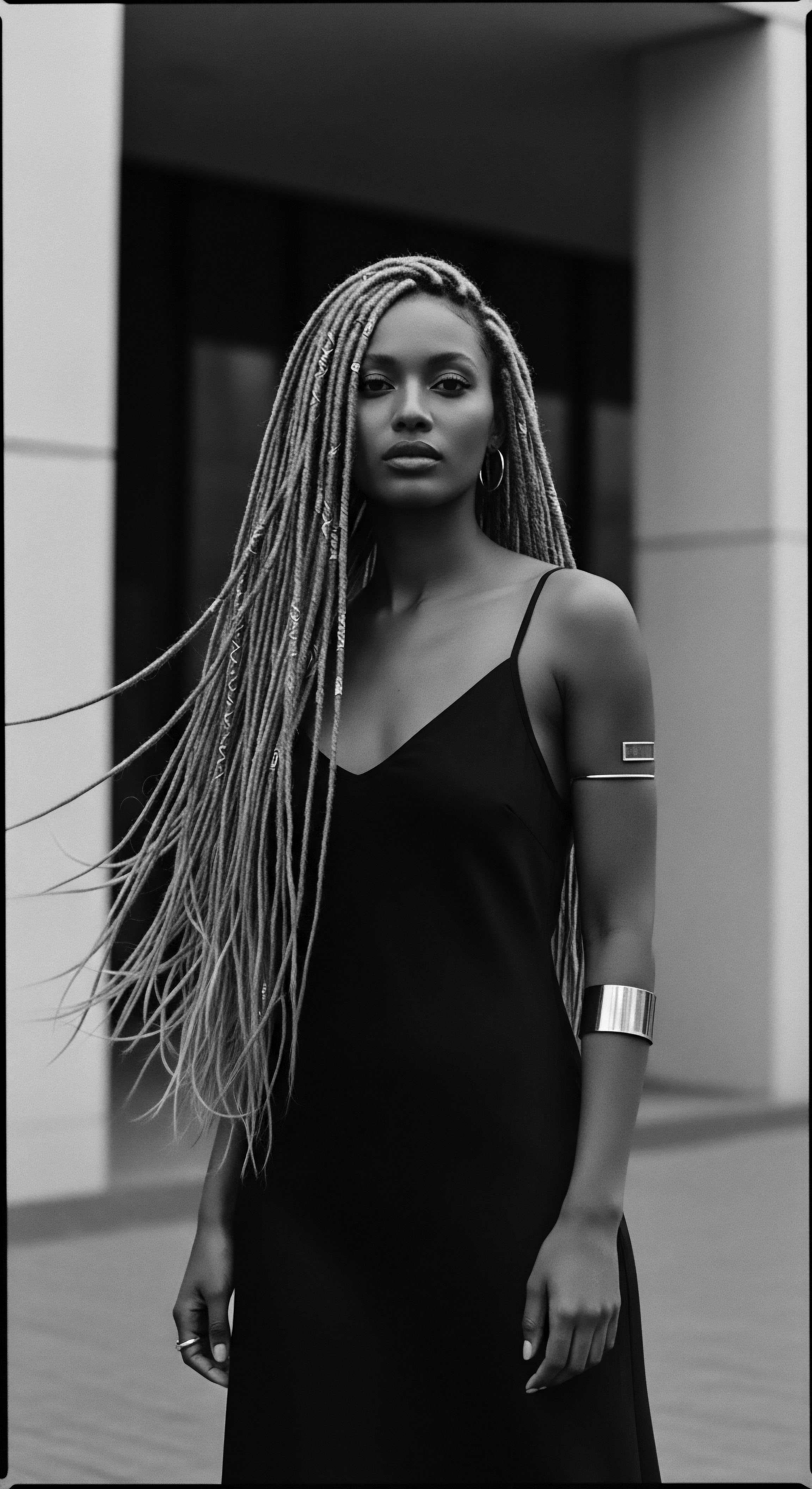
Reflection
The journey through textured hair’s inherent architecture, its ancestral rituals, and the precise science of oil sun defense leads us to a profound understanding ❉ our hair is a living archive. Each coil and wave carries not only genetic code but also the wisdom accumulated over generations, a testament to resilience and ingenuity in the face of environmental challenges. The simple act of applying oil for sun defense, far from being a modern invention, is a deep echo from the source, a practice that connects us directly to the protective instincts of our forebears. It is a harmonious blend of nature’s bounty and human understanding, a silent dialogue between the strand and the sun, mediated by a heritage of care.
Our textured hair, with its unique structural geometry, inherently requires a thoughtful, protective approach. The sun, a life-giver, can also be a subtle adversary, gradually eroding the strength and vibrancy that define our strands. The oils, a gift from the earth and a legacy from our ancestors, step in as steadfast guardians. They are not merely cosmetic adornments; they are molecular shields, moisture preservers, and antioxidant allies.
This understanding invites us to view our daily hair regimens not as chores, but as acts of profound connection—a continuation of a legacy, a celebration of what our hair has always been, and what it is destined to become. The soul of a strand, indeed, finds its deepest resonance in this unbroken chain of wisdom, ensuring its luminous journey continues, protected and celebrated, under every sky.
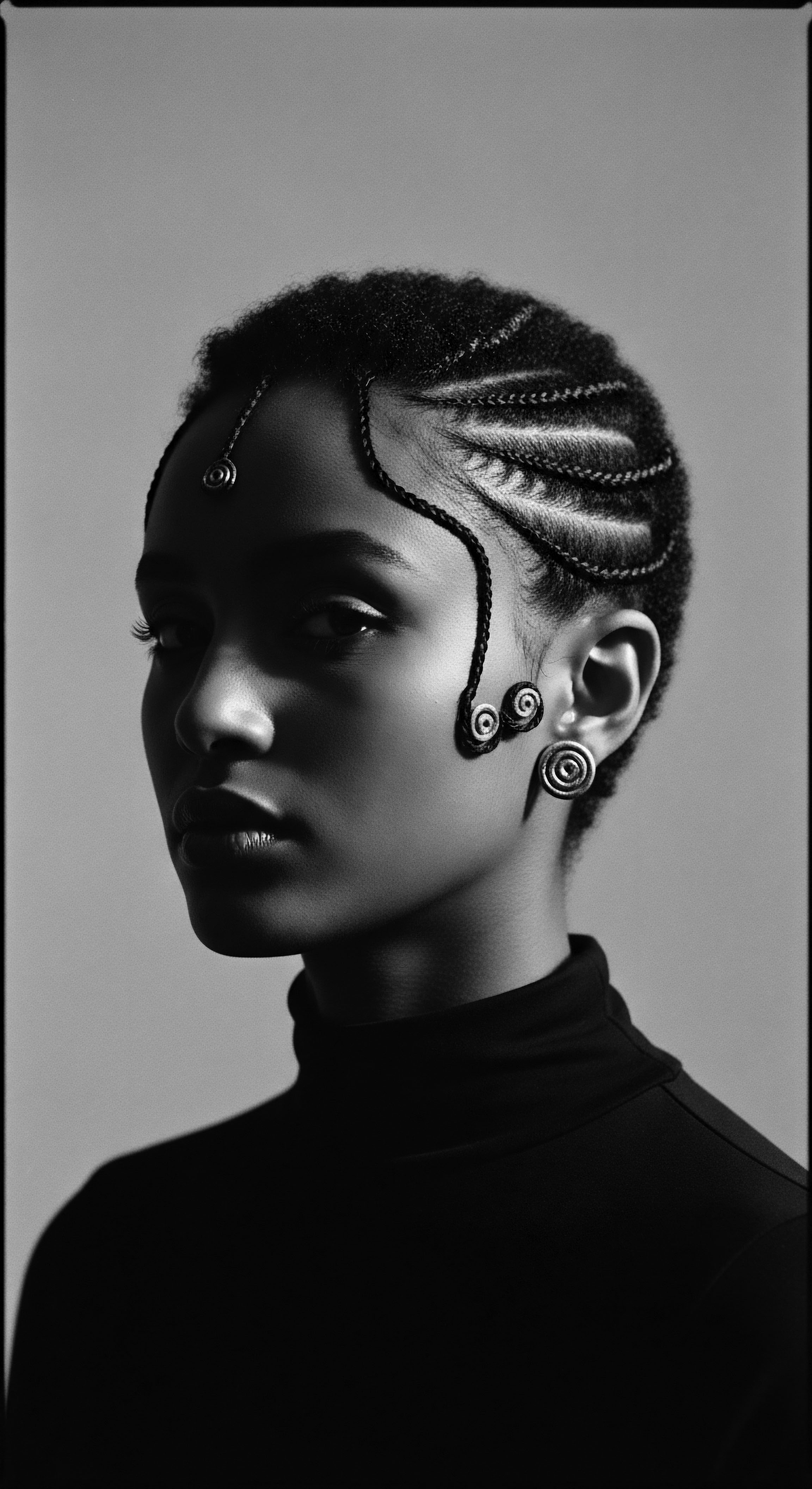
References
- Al-Ghassani, A. A. et al. (2018). A Review on UV Radiation Absorbing Natural Products for Sunscreen Formulation. Journal of Photochemistry and Photobiology B ❉ Biology.
- Keis, K. et al. (2011). Effects of Coconut Oil on Hair Damage Prevention. Journal of Cosmetic Science.
- Ruetsch, S. B. et al. (2012). Effects of Ultraviolet Radiation on Hair ❉ A Comprehensive Review. Journal of Cosmetic Science.
- Robbins, C. R. (2012). Chemical and Physical Behavior of Human Hair. Springer Science & Business Media.
- Gavazzoni, M. F. et al. (2017). Hair Cosmetics ❉ An Overview. International Journal of Trichology.
- Draelos, Z. D. (2015). Hair Cosmetics ❉ An Overview. Journal of Cosmetic Dermatology.
- Marsh, J. M. (2014). The Science of Hair Care. Allured Business Media.
